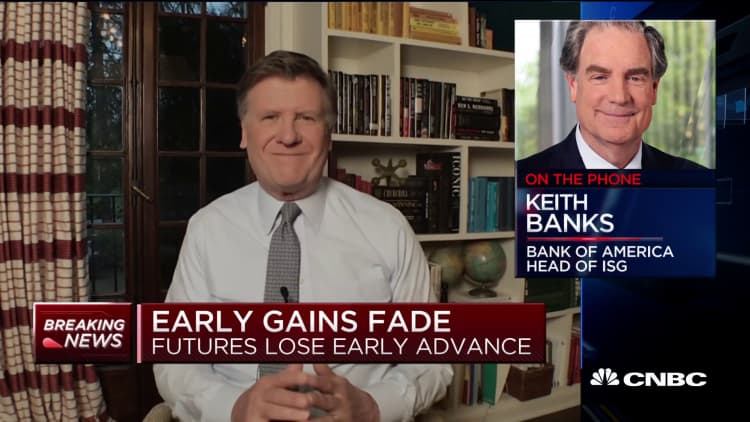
Stocks fell on Tuesday, the last day of the first quarter, as investors wrapped up a period of historic market volatility sparked by the coronavirus pandemic.
The Dow Jones Industrial Average closed 410.32 points lower, or 1.8%, at 21,917.16. The S&P 500 dropped 1.6% to 2,584.59. The Nasdaq Composite fell nearly 1% to 7,700.10. The 30-stock benchmark was up as much as 152 points earlier in the day.
The Dow and S&P 500 had their worst first-quarter performances ever, losing 23.2 and 20%, respectively. The Dow also had its worst overall quarter since 1987 while the S&P 500 had its biggest quarterly loss since 2008.
Wall Street also posted sharp losses for the month. The Dow and S&P 500 fell 13.7% and 12.5%, respectively, in March. It was their worst one-month declines since 2008. The S&P 500 and Dow also recorded moves of at least 1% in 21 of the 22 trading days this month.
Stocks fell Tuesday while digesting a number of issues stemming from the coronavirus pandemic:
- New York Gov. Andrew Cuomo said coronavirus cases in the state jumped by 14% overnight to more than 75,000.
- Goldman Sachs said that the economy would go through an unprecedented plunge in the second quarter, but that the recovery would then be the fastest in history.
- U.S. consumer confidence posted a big decline. The Conference Board said Tuesday its consumer confidence index dropped to 120 this month from 132.6 in February.
- Bank stock such as JPMorgan Chase, Citigroup and Bank of America continued to drop. JPMorgan and Citi fell 3.6% and 4.5%, respectively, while Bank of America lost 3.7%. The stocks have been under big pressure this week from declining rates.
Many on Wall Street are calling for even more selling before the market can hit a bottom. Historically, bear markets are often punctuated by sharp bounces on their way down to a trough.
"Last week's double-digit gain for markets was a welcome relief rally, though market bottoms are rarely as clean as this one has been," said Mark Hackett, Nationwide's chief of investment research. "Markets will need to reflect more traditional interactions before confidence in a bottom can be reached."
Investors continued to grapple with the worsening outbreak in the U.S. as the confirmed cases rose to more than 177,000, according to data from Johns Hopkins University. The U.S. has also officially become the country most affected. Trump said Sunday he hopes the country will "be well on our way to recovery" by June 1.
To be sure, stocks have regained some ground since last week. The Dow has rallied more than 17% since reaching a low on March 23 while the S&P 500 has gained 15.5% since then. Part of those gains came on Monday, when the Dow jumped nearly 700 points after President Donald Trump extended the timeline for social distancing guidelines to April 30, which many believe will reduce economic damage in the long run.
"It's hard to envision the equity market trending higher without some visibility and the curve of new cases begins to flatten out," said Terry Sandven, chief equity strategist at U.S. Bank Wealth Management. "Perhaps we'll get some of those characteristics as you look through the earnings season."
"We do not think this is going to be a V-shaped recovery; we think it's more of a U-shaped recovery," said Sandven. "The risk of a recession is still pretty high, and we're likely to be in a recession right now."
Subscribe to CNBC PRO for exclusive insights and analysis, and live business day programming from around the world.



